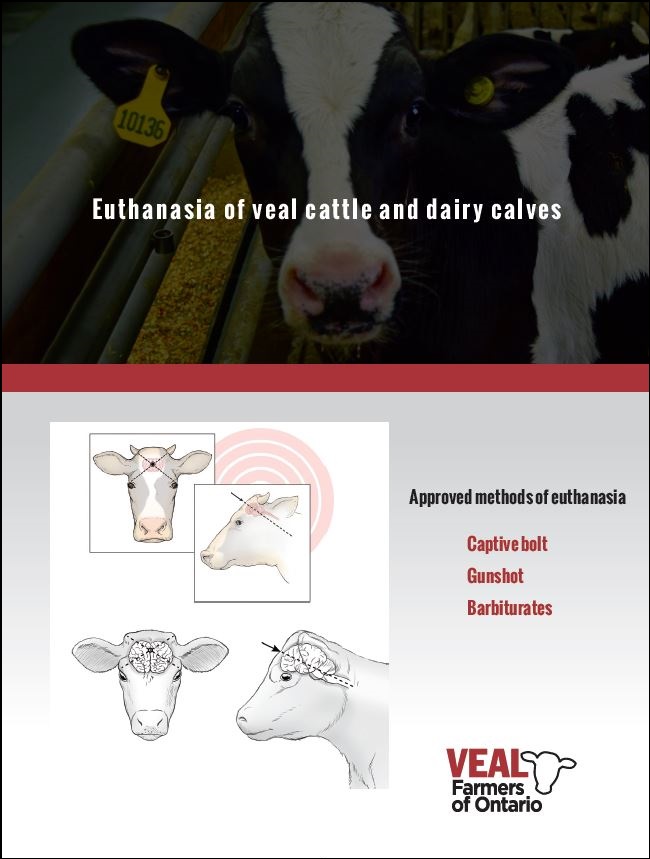Healthy Calf Conference
Follow to stay up-to-date on all Healthy Calf Conference updates. Speaker announcements, sponsorship information, registration announcements, and more.
There are many positives to raising calves, like the feeling of successfully raising healthy, strong calves that go on to be productive members of the herd, laying the foundation for the next generation. However, just like there are positives, there are also negatives—for example, when there is a disease outbreak and a sick calf needs to be euthanized. Nobody likes to do it, but sometimes it must be done.
Euthanasia, or the humane termination of an animal’s life, is a necessary reality of raising livestock. It must be done only using an approved method and following an on-farm euthanasia protocol designed with the herd veterinarian. If one is not already established, now is the time to work with your veterinarian to create a farm-specific protocol, one that all members of the team are comfortable with.
Not all people are comfortable with this task, but protocols and proper training go a long way towards improving the comfort level of the people involved. It is important to keep in mind that protocols work when the people who are trained are on the farm at the time of the decision to euthanize, therefore there may need to be a trained back-up person in case the primary person is unavailable. Having training and protocols in place will help to make the decision quicker, ending the animal’s suffering.

Approved methods of euthanasia for calves are:
• Overdose of barbiturates (can only be administered by a licensed veterinarian)
• Gunshot (requires firearm safety training and a license)
• Stunning with a captive bolt (must be followed by a secondary step to ensure death, such as bleeding out or pithing)
For a detailed list of approved euthanasia methods, visit bit.ly/2qioCuI for VFO’s downloadable resource.
These methods are approved because, when done properly, they cause minimal pain and distress, render the animal immediately unconscious, and are irreversible. Methods including, but not limited to, air embolism, blows to the head (blunt force trauma), motor vehicle exhaust, bleeding out without proper stunning and electrocution are NOT approved methods for euthanasia of calves. These methods cause pain and suffering.
It is also important to include a euthanasia equipment cleaning protocol to ensure the equipment is cleaned and maintained according to manufacturer instructions, and then stored securely and safely. This will help to prevent equipment issues when it is needed.
Included in the farm protocols should also be a plan for disposing of the carcass. The carcass of the calf, regardless of the method of euthanasia, must be properly disposed of using an approved method as regulated by the Nutrient Management Act, 2002, O. Reg 106/09 Disposal of Dead Farm Animals. This regulation requires that the animal must be disposed of within 48 hours of death by methods such as using a deadstock service, or on-farm options such as incineration, composting, burial, disposal vessels, or anaerobic digesters.
Although reluctance to euthanize a calf is understandable, proper training and protocols help the decision-makers with the unpleasant task. Remember euthanizing a week too early is better than a day too late! Timely euthanasia prevents the animal from experiencing unnecessary pain and distress. By recognizing that the calf needs to be euthanized and ensuring the veterinarian-developed procedure is performed by trained personnel, the overall welfare of the animal can be maintained.
Follow to stay up-to-date on all Healthy Calf Conference updates. Speaker announcements, sponsorship information, registration announcements, and more.
The Codes of Practice are nationally developed guidelines for the care and handling of farm animals. They serve as our national understanding of animal care requirements and recommended practices.